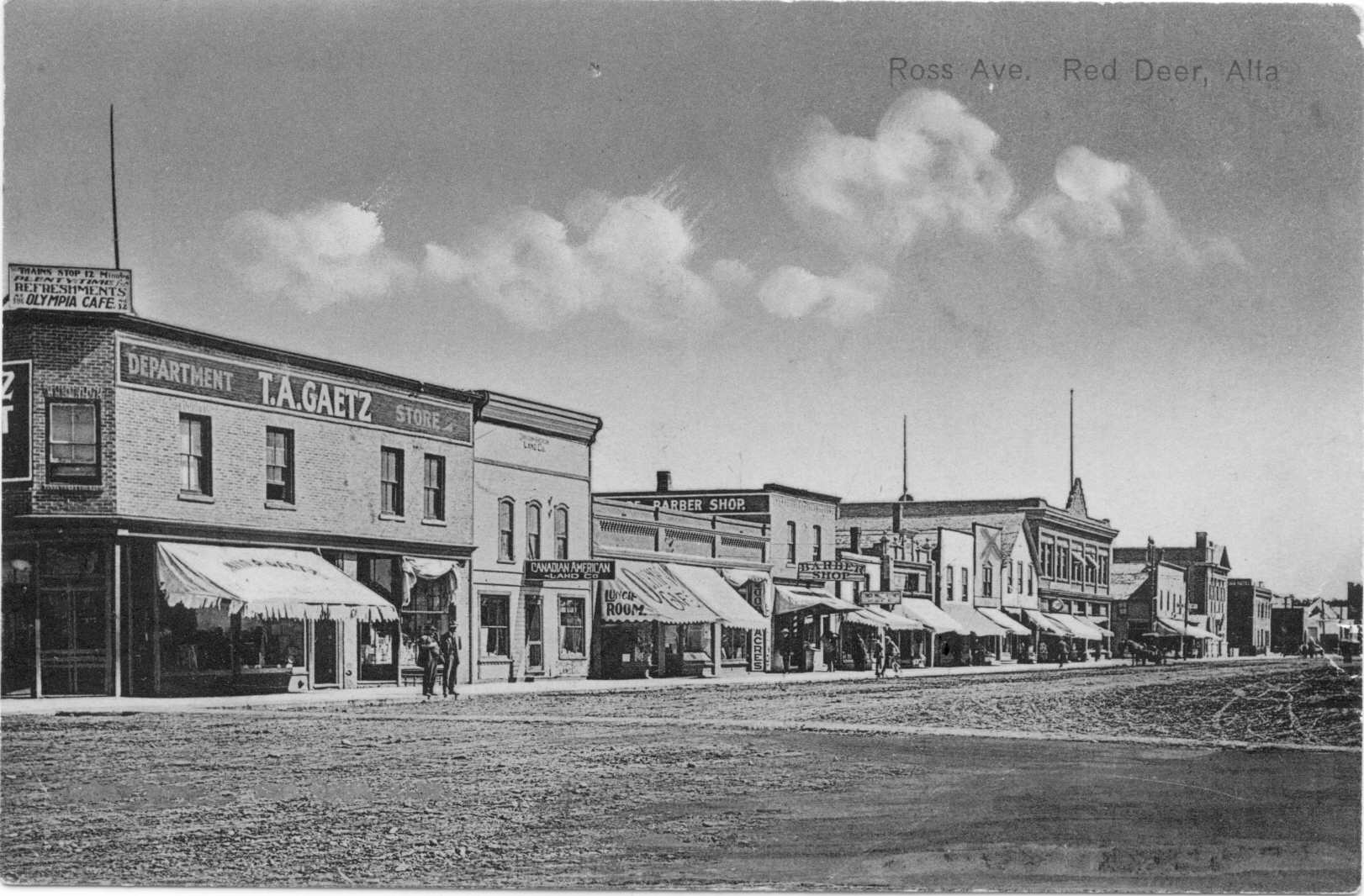Names of streets, avenues, parks and communities are something which we use continuously every day. However, we rarely stop to ask, how it is that this name came about, or what does it signify.
Names are used to identify locations and places and are meant to help with direction. Therefore, often the subdivision names are descriptive (e.g. South Hill or West Park). However, street and avenue names were often given to honour a particular individual or family.
When the Hamlet of Red Deer was first developed in November 1890, almost all the streets and avenues were named after the senior officials of the Calgary-Edmonton Railway Company.
Hence, Mann (49) Street and McKenzie (49) Avenue were named after Sir Donald Mann and Sir William McKenzie, the two superintendents for the railway contractors and later the founders of the Canadian Northern Railway.
One exception to this pattern came with the naming of the main north-south thoroughfare, Gaetz Avenue. Rev. Leonard Gaetz provided a half share of his farm for the townsite of Red Deer and thus got one of the major roads named after him.
While the initial intent with the street and avenue names was to provide a perpetual remembrance of the C & E Railway officials, only one of those names continues to this day. That is Ross Street, named after Sir James Ross, the head of the C & E Railway.
A frequent question is why are Red Deer’s north-south roadways called avenues and east-west roads streets? Unfortunately, the reason for this unusual practice is something that has been lost in the mists of time. However, curiously, from 1890 to 1909, the main east-west road was known as Ross Avenue and not Ross Street.
In 1913, the City of Red Deer decided to adopt a new system, much like the one that had been used in Calgary. The City was divided into four quadrants and the streets and avenues were given numbers such as 1 Street S.E. and 2 Avenue N.W. In a few spots downtown, these numbers can still be seen embedded in the sidewalks.
A few thoroughfares kept their names, such as Ross and Gaetz as well as Waskasoo (now 45) Avenue. In another anomaly that defies reasonable explanation, 7 Street S.W. (now 43 Street) was universally called Victoria Avenue.
In 1947, when natural gas service was being installed, Northwestern Utilities asked the City to adopt an Edmonton-style system (e.g. 52 Street and 47 Avenue). The Central Alberta Pioneers and Old Timers Association protested the loss of historical names. Consequently, 50 Street and 50 Avenue continued to have their original designations as Ross and Gaetz.
Over the next several years, this new pattern was followed with occasional exceptions such as Spruce Drive. In 1961, when the Sunnybrook subdivision was developed, the traditional grid pattern of streets was not used. This meant that a system of named rather than numbered streets would be more practical. A decision was also made that the names would all start with the same letter as the subdivision.
Initially, there was no particular significance to the names used. However, in 1964, the Old Timers Association convinced the City to use pioneer family and prominent residents’ names for the streets.
Morrisroe was the first subdivision where this new policy was followed. The former City’s Archives Committee was asked to prepare a list of 35 to 40 names of pioneers, long-time residents and prominent citizens with the same letter as the new subdivision. This list was then passed on to a City naming committee for a selection of names that were to be relatively easy to spell, and which did not conflict with any existing street names.
With arterial roads, or ones that extended through several subdivisions, numbers continued to be used. However, there were occasional exceptions such as Taylor Drive, which is the major arterial road running north and south on the west side of the City.
The mix of numbered thoroughfares with named streets and avenues continues. However, often the names used are no longer those of long-time and/or prominent residents and families.



